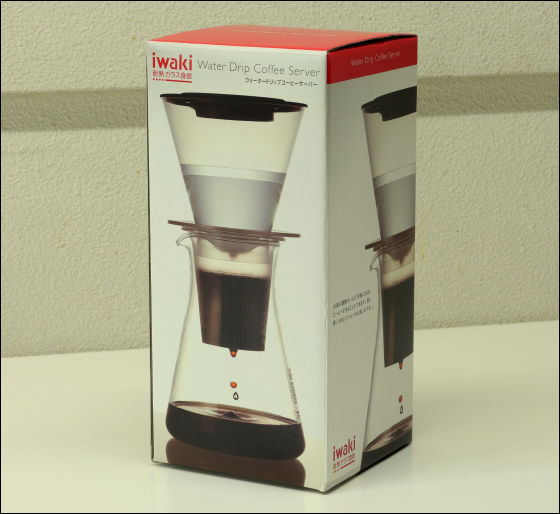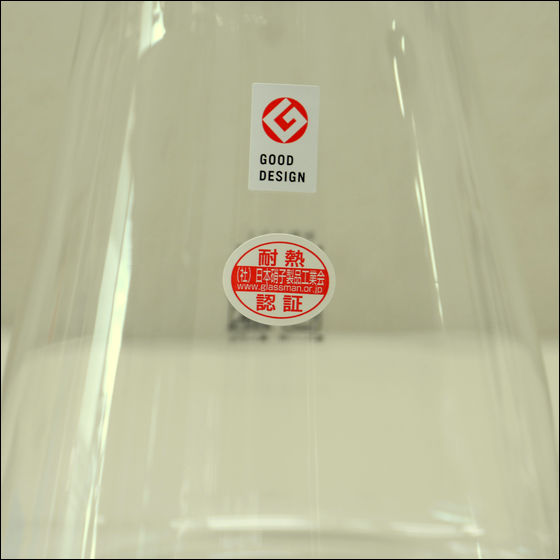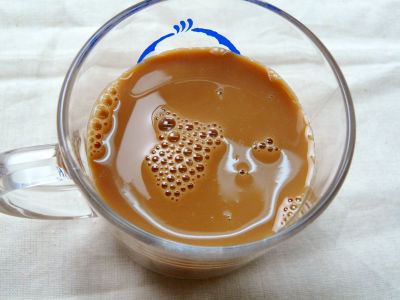I tried to use a dedicated server to make a 'watering out coffee' made with potapota falling water

Generally speaking, 'sprinkle coffee' often refers to pouring hot water into ground coffee beans, but instead of using hot water, take the time with water and slowly extract the coffee There is also a way. Its origin seems to have been a device for making low-quality beans and easy-to-drink
There are several ways to make Dutch coffee, which is said to be particularly suitable for iced coffee, but this time, using a dedicated coffee server, I decided to look at the appearance of coffee while watching the drops of falling water.
Water drip coffee server | iwaki [Iwaki] of heat resistant glass tableware
https://www.igc.co.jp/product/water_drip_coffee_server/
This time, I decided to use the iwaki “water drip coffee server” (KT8644-CL: list price 2200 yen) to make a cup of coffee. Speaking of water server in this price range, there are many types that immerse coffee beans in water, but this model is the type that extracts while dropping a small amount of water droplets from the top.

First open the package. Three transparent containers, a black lid, and an instruction manual were set.

The pot for receiving the extracted coffee is made of glass. We can make out-watered coffee for 4 people (440 ml).

A sticker was affixed to show the award of the Good Design Award and the heat-resistant glass certification. This container can not be heated directly, but after extraction it can also be heated to a hot coffee in the microwave.

The container was made in Thailand.

The left is a container for containing coffee beans, and the right is a water tank set at the top of the main unit.

At the bottom of the water tank is a small hole less than 1 mm in diameter.

A very fine filter is set at the bottom of the container for the coffee beans.

The lid was divided into two parts.

It is said that medium-sized to fine-grained beans are suitable for pouring out coffee. This time, I tried using Ogawa Aoi's

First of all, prepare 40 grams of beans, an appropriate amount for 4 cups.

Pour into a container.

Apply 40 ml of water slowly to the beans to moisten them according to the instructions, before beginning the extraction. I use a muddler to gently stir the beans, but be careful not to break the bottom filter.

Once all the beans are moist, the top is flat and ready. The point is not to crush too much.

When the beans are ready, set the filter in the glass pot and place the water tank from above.

Start extraction. Prepare 440 ml of water ...

Do not go to the water tank at once. Do not pay attention to the pouring speed in particular.

As soon as I put the water in the tank, the water started to drip from the bottom.

After 2 to 3 minutes, the whole bean penetrates with water, and the extracted coffee is popped from the bottom.

It takes 2 hours to extract slowly like this.

The following movie shows how coffee is extracted by dripping water. The time I was watching the ripples of the coffee drop was a relaxing moment.
It takes about 2 hours to complete the watering coffee.

Water still remains in the water tank, but not all the water falls due to its structure.

When I removed the water server etc., a slight smell of coffee was found. It is a good smell.

You can see that the coffee is dark even if you try to light it.

Pour into a cup and taste the finish.

When I take a bite, I first notice that it feels very mellow. There is no feeling of 'gout' like coffee extracted with hot water, and it feels like drinking mineral water. Still, the aroma and taste are exactly what coffee is, and it is the very feature of the dewatered coffee itself. It may be said that it is a unique way of drinking coffee to remember the feeling of being slightly 'sluggish'.

I decided to compare it with the taste when it was extracted with hot water using the same beans. Because of the high quality of the beans, the dome and bubbles of the beans that can be produced when the hot water is poured out beautifully.

I tried to compare them drinking. The hot coffee on the right has a strong aroma, richness, bitterness and acidity, compared to the coffee from which it is poured out. If it says to the body, it is 'the usual coffee which I got used to drinking,' but when I compare it with the coffee that I drink, I can realize that 'it was so bitter and sour!' It's too much to disappoint. On the other hand, it isn't as powerful as hot coffee, but it may be said that it is easy to drink coffee and only the delicious part is extracted. It is a finish that seems to be drinkable with gokgok.

I tried to put in milk. Thanks to the roundness, hot coffee seems to have the best balance of taste in this state. Still, there is a feeling of volume that you would like to say 'ぅ ぅ' if you drink a bit as usual, but one of the cups of coffee out of the water is also 'sururun' in the texture and is easier to drink.

What I felt after drinking was the refreshing taste of the after-water coffee. Hot coffee has a good or bad taste of coffee in the mouth, but there is no unpleasant taste after pouring out the coffee, so it tastes good enough to drink as many cups as possible. Impressive, even people who are not good at coffee could enjoy the taste.
The 'iwaki water drip coffee server' used in this review and the 'Ogawa coffee shop organic coffee original blend' are on sale at the online shop of amazon. In addition, the coffee server is 20% off during the summer vacation sale until August 18.
Amazon.com: iwaki Water Drip Coffee Server 440ml K8644-CL: Home & Kitchen

Amazon.co.jp: Ogawa Coffee Store Organic Blend Original Blend Powder 170g: Food & Beverage

Related Posts:







